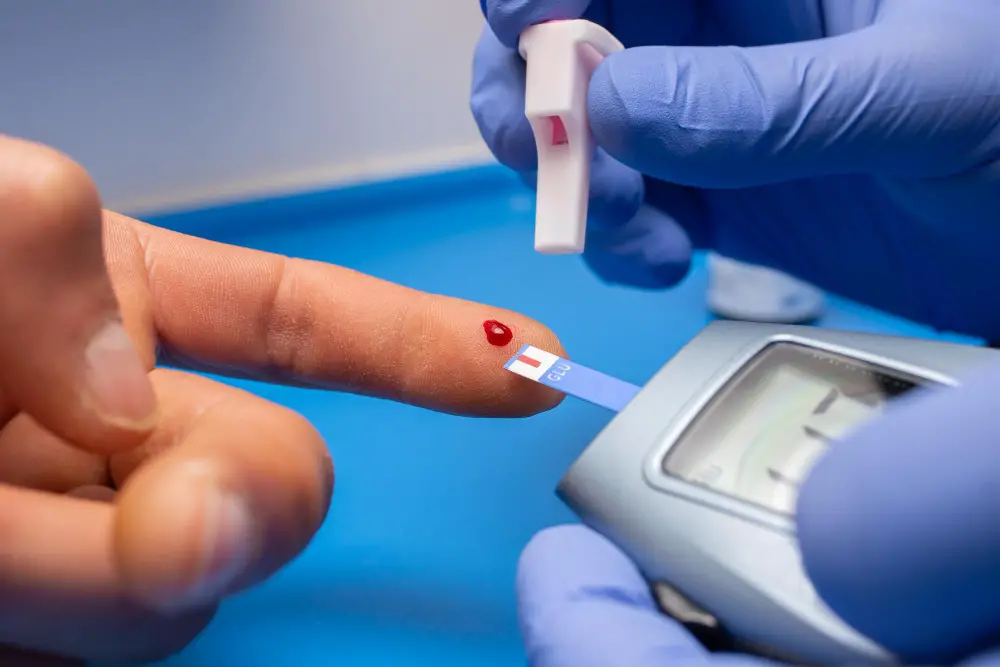
Atrial Fibrillation vs Ventricular fibrillation: Know the difference to save lives
-
- Dr. Junaid Arshad
- November 1, 2021
- 4 comments
Table of Contents
Introduction
Definition
The word “fibrillation” when used for heart means an abnormal or twitching movement of the heart muscle that greatly affects the functioning of the involved area.
Atrial fibrillation and Ventricular fibrillation are the conditions in which the normal healthy forceful contractions of the atria and the ventricles are replaced by these abnormal twitching movements.
Basic Heart Structure and Function
For understanding the differences between atrial fibrillation and ventricular fibrillation, let’s first discuss the basic structure & function of the heart.
The heart is made up of 4 chambers.
Heart chambers fill during the relaxation phase and empty forward during the contraction phase.
The 2 atria (right and left) contract and empty themselves in the respective ventricles which then further contract to push blood in the blood vessels that ultimately carry it to all the organs including the brain, kidneys & lungs.
A normal heart undergoes cycles of contraction and relaxation.
Most of the blood that reaches the ventricles through the atria comes during the relaxation phase and at the end of this phase, the atria contract to push the little left-over blood into the ventricles.
After that ventricular contraction is responsible for the delivery of blood and nutrients to the whole body and the vital organs.
V-fib is more dangerous than A-fib
The above mentioned mechanism gives a basic concept of why v-fib is more dangerous than afib.
Whereas inability of atria to contract properly as occurs in A-fib causes pooling of blood within the chamber thus promoting clot formation leading to stroke, and heart failure due to backflow of blood in the lungs.
Symptoms (What patient feels)
| Afib | Vfib |
| There may be no symptoms and the patient feel completely normal during and between episodes Palpitations (fast racing heartbeat) Breathing difficulty/breathlessness Poor exercise tolerance and easy fatiguability Chest pain or tightness Lightheadedness Syncope, defined as episodes of fainting or sudden loss of consciousness followed by complete recovery | Never asymptomatic Palpitations may occur with vfib as well and in this case, are usually sudden in onset and episodic Syncope or presyncope Severe chest pain most commonly indicating a heart attack Sudden collapse leading to a fall |
Consequences/Outcomes
| Afib | Vfib |
| Stroke: As afib promotes clot formation, that clot can travel from the heart via the blood and occlude the blood vessels of the brain, thus compromising its blood supply. Failure of blood to reach a specific part of the brain can damage that part which may be permanent or might recover to some extent after some time and is called a stroke. 20-30% of strokes that occur due to decreased blood supply to the brain (ischemic stroke) occur due to afib. Heart Failure: In patients with afib, the ventricles start beating at a faster rate as well. Both ineffective atrial contractions and fast ventricular rate contribute to the back pooling of blood within the blood vessels of the lungs causing a condition called pulmonary edema (fluid accumulates within the lungs). The patient feels short of breath especially during lying straight and need to elevate the head end to improve breathing. The severe form can cause shortness of breath at rest in a sitting position as well and needs immediate emergency care. This complication occurs in 20-30% of patients with afib and is one of the major causes of mortality associated with it. Cognitive impairment: Patients may experience a decline in cognitive function characterized by decreased ability to learn and remember things. The mechanism behind this is a comprise in the blood supply of the brain and micro embolisms which are small blood clots that do not cause stroke but still cause minor damage to the brain. Depression: The severity of symptoms and poor quality of life due to the above-mentioned complications all contribute to the development of severe depression in 16-20% of patients with afib. Suicidal cases have been reported as well. Hospital admission: 31% of the patients require hospitalization at least once a year and around 10% require it twice a year [1]. Heart-related complications were the most common reason for hospitalization occurring in 49% of the population and 8% were admitted due to bleeding complications secondary to the use of blood thinners [2]. Death: Complications like stroke and heart failure are the major contributors of death in such patients, increasing the risk to almost two-fold in female patients and 1.5 folds in male patients [3]. | Sudden death: The only and the most dreadful outcome of v-fib is sudden death that occurs in apparently healthy individuals usually within one hour of the onset of symptoms. Death is inevitable unless it is managed within the initial 5 – 7 minutes by giving shock via a defibrillator or by performing CPR by the experienced operators or the patient is already a diagnosed case having an implantable cardioverter-defibrillator. Unlike afib, the body doesn’t get time to suffer a stroke or heart failure and death occurs. However, if a person gets rescued, heart failure may be present and the patient always requires hospitalization that too in intensive/cardiac care units requiring ventilatory support. |
Who is at Risk?
| Afib | Vfib |
| Elderly population. Hypertensive patients. Patients with valvular heart diseases like mitral stenosis or mitral regurgitation. Patients having heart attacks/coronary artery disease. Dilated cardiomyopathy-weakened and dilated heart is predisposed to all kinds of rhythm abnormalities including afib. Patients taking certain medications like Salbutamol, lithium, etc. Patients having active infection of any kind like bacterial or viral infections. Alcoholics. Patients with obstructive sleep apnea (OSA). | A person having a family history of sudden cardiac death or vfib. Patient with a previous episode of vfib.Heart attacks/coronary artery disease. Dilated cardiomyopathy in which the heart becomes weak and heart chambers get dilated. Patients with genetic diseases like Brugada syndrome, hypertrophic obstructive cardiomyopathy, long or short QT syndromes. Presence of electrolyte abnormalities like calcium, magnesium, and potassium. |
Treatment
| Afib | Vfib |
| Medical management includes the following: Rate control drugs like beta-blockers, calcium channel blockers, digoxin. Rhythm control either by medication like amiodarone, flecainide, or by electrical cardioversion. Blood thinners like warfarin or rivaroxaban, apixaban, dabigatran, edoxaban. Catheter ablation. Surgical ablation like maze procedure. | The only treatment option is electrical cardioversion in which a shock of 200-360J is given via a defibrillator which is followed by CPR if normal rhythm and pulses don’t return. Anti-arrhythmic drugs like amiodarone are used when a patient gets rescued from an acute episode. Correction of electrolyte abnormalities. Treatment of underlying cause. |
Prevention
| Afib | Vfib |
| Adopt a healthy lifestyle by eating a balanced diet and maintaining your body weight within normal limits. Avoid smoking, alcohol, and too much caffeine products. Optimally treat the underlying risk factors or comorbid conditions mentioned above in the risks section. | Screening plays an important role in diagnosing the underlying condition in the family members of patients with sudden death. Once diagnosed, appropriate therapeutic modalities can be used accordingly, thus preventing or decreasing the risk of vfib. Methods for screening include EKG, cardiac imaging like echocardiography or CMR to look for any structural abnormalities, and genetic testing. Implantable cardioverter-defibrillator (ICD) is the most important device used for the prevention of vfib in those who have survived an acute episode and is also used in some individuals who have an extremely high risk of the disease. |
Conclusion
Atrial fibrillation usually causes complications in long term, but ventricular fibrillation is an emergency that if not addressed within a few minutes always results in the death of an individual. Large-scale screening should be done in populations at risk and immediate steps should be taken accordingly.
Both doctors and paramedics working in cardiac or non-cardiac setups should be experts in immediate recognition and prompt management of vfib.
Afib can also cause deadly complications therefore proper management including strict compliance and follow-ups is essential.





Great article. Very informative
Thanku